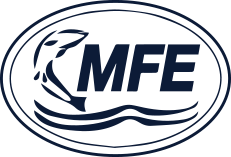Forse non lo sapete, ma quasi ogni volta che fate un’uscita di pesca a mosca molto probabilmente usate almeno una, e forse più di una, delle idee nate in Italia nel corso degli ultimi trent’anni ad opera di Angelo Musiani, e che poi hanno trovato applicazione e distribuzione un po’ in tutto il mondo. Angelo ha cominciato a sviluppare i suoi prodotti 45 anni fa, cioè all’età di quattordici anni, quando ha iniziato a costruire mosche per gli amici del Club di Pesca a Mosca di Bologna. Molte le sue innovazioni, prima fra tutte l'introduzione delle mosche in cul de canard in Italia, la cui origine si deve ad un ciuffo di piume portate da un amico che aveva avuto contatti con pescatori svizzeri nella ex Jugoslavia. Sicuramente fu il primo a presentarle e poi a commercializzarle in mercati come Giappone, Inghilterra e Stati Uniti, così come sono state le prime a comparire nei cataloghi Tiemco e Orvis. Ha poi disegnato le prime testine in ottone a foro conico ( brass bead heads ) per la pesca a ninfa per il mercato europeo, poi introdotte negli Stati Uniti sul catalogo Orvis. L’evoluzione di questi primi prodotti sono state le testine coniche ( cone heads ) per gli streamer. Altro prodotto inventato da Angelo, che non manca mai nelle nostre scatole da costruzione, sono le “clessidre” in ottone, che inizialmente esistevano solo in fusione di piombo. Angelo ha anche fatto conoscere l’uso dell’ Amadou come drier negli USA, così come buona parte degli accessori che ora si trovano nei cataloghi più prestigiosi. Anche le ciniglie, dalle micro ciniglie a tutte le ciniglie di taglio lungo ed extra lungo, sono state introdotte, generalmente prima in Usa poi in Europa, da Angelo. Ma l'elenco è ancora più lungo. Fondamentalmente Angelo pensa che ci siano due tipi di pescatore: quello che ama essere ben in vista, che generalmente preferisce le pool vicino al ponte e predilige il sasso più alto e il pescatore che è ben nascosto dietro una roccia. Angelo appartiene al secondo tipo, a lui piace stare dietro il sasso, meglio ancora dietro una mangrovia, vista la sua trentennale esperienza di pesca in saltwater.
You may not know, but almost every time you go on a fishing trip you are likely to use at least one, and perhaps more than one, of the ideas born in Italy over the past thirty years from the mind of Angelo Musiani, and then distributed all over the world. Angelo began to develop his products 45 years ago, that is, at the age of fourteen, when he started making flies for his friends of the Fly Fishing Club in Bologna. Many of his innovations, most notably the introduction of flies in cul de canard in Italy, whose origin is due to some feathers brought by a friend who had had contacts with Swiss fishermen in the former Yugoslavia. Certainly he was the first to show and then distribute them in markets such as Japan, England and the United States, and they were the first to be published in the catalogues of Tiemco and Orvis. He designed the first brass bead heads for nymph fishing for the European market which were then introduced in the United States on the Orvis catalogue. The evolution of these early products were the cone heads for streamers. Another product invented by Angelo, which is always in our fly boxes, are the brass dazl eyes which initially existed only in lead. Angelo has also introduced the use of Amadou as a drier in the US, as well as most of the accessories you can find in the most prestigious catalogues. Even chenilles, from micro chenilles to long and extra long ones, have been introduced, first in the US then in Europe, by Angelo. But the list is even longer. Angelo thinks there are basically two types of fishermen: the one who likes to show off, who generally prefers the pool near the bridge and the highest rock, and the fisherman who is well hidden behind a rock. Angelo belongs to the second type, he likes to be behind the stone, even better behind a mangrove, considering his thirty years of fishing experience in saltwater.
